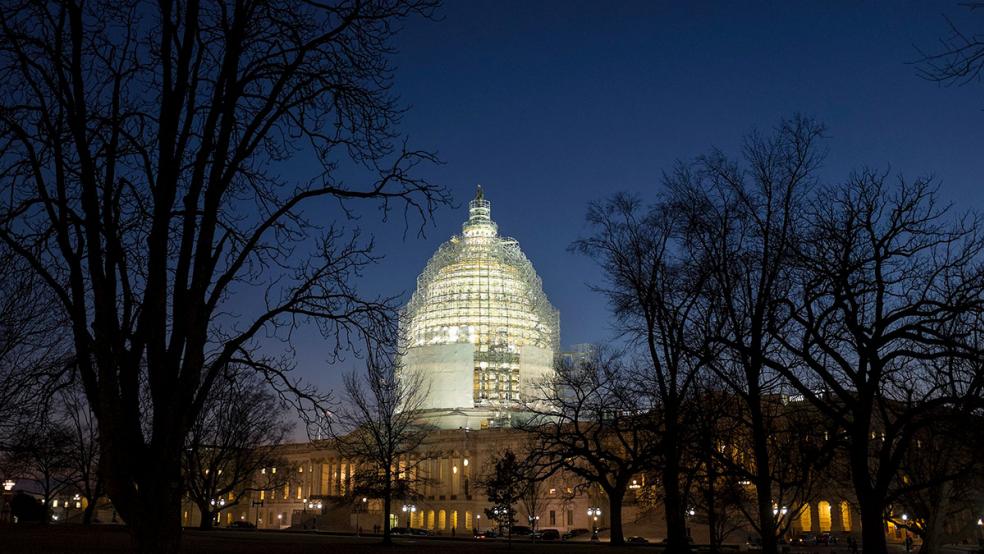There is increasing enthusiasm among congressional Republicans for a plan to change the way the long-term costs and benefits of tax and spending policies are calculated -- one that would allow the party’s tiny minority in the Senate to approve budget-busting tax cuts that could stay on the government’s books for as long as two decades.
Current policy is that when proposals are scored by the Congressional Budget Office and the Joint Committee on Taxation, they are measured over a 10-year time frame. The thinking is that that window allows for some of the long-term effects of policies to be considered, while avoiding the inevitable estimation errors that are compounded with much longer time horizons.
Related: How Republicans Could Make a ‘Temporary’ Tax Cut Last for 20 Years
However, that 10-year window has been a problem in the context of the current Congress, because the Republicans, despite controlling both the House and Senate, have pinned all of their hopes for tax cuts and a major overhaul of the health care system (which involves even more tax cuts) on budget reconciliation bills that can get through the Senate with a simple majority.
The price for avoiding a Democratic filibuster, though, is that the reconciliation packages have to conform with the “Byrd rule,” which prevents them from adding to the federal deficit outside the budget window. Because many of the policies that Republicans want to put in place, including major tax cuts, are likely to do just that, the legislation would have to include a “sunset” provision, causing them to expire before the end of the 10-year window.
Earlier this week, though, Pennsylvania Sen. Pat Toomey floated the idea of expanding the budget window, perhaps to 20 years, in a hearing that featured Treasury Secretary Steven Mnuchin. Toomey’s argument, which Mnuchin indicated the administration was receptive to, was that the extended window would give the economy time to benefit from what he insisted would be the pro-growth effects of a tax cut.
Critics of the plan were dubious about the claim that the benefits of the tax cut -- if they exist at all -- would take more than a decade to play out.
Related: Trump Treasury Could Defang a Major Consumer Financial Watchdog
Marc Goldwein, senior vice president and senior policy director at the Committee for a Responsible Federal Budget, said the plan sounded to him like a ruse meant to pass an extended tax cut by manipulating the Senate’s rules.
“If the purpose of extending the budget window is so that you can manipulate the Byrd rule and make it so that you have a ‘temporary’ tax cut or ‘temporary’ deficit spending that goes for 19 years before it expires, that’s just ridiculous,” he said. “It’s a pure gimmick and there’s no basis for that except to circumvent important senate rules.”
But Toomey’s plan appears to be gaining some powerful supporters in Congress, according to interviews two of them gave to Bloomberg on Thursday.
On Thursday, Senate Finance Committee Chairman Orrin Hatch of Utah signaled that he is interested in the proposal, telling the newswire he would like to expand the budget window, calling the current 10-year framing of economic effects “problematic.”
Related: Why a Soaring Stock Market Makes Tax Reform Harder
On the House side, Rep. Mark Meadows of North Carolina, who chairs the influential House Freedom Caucus, also signaled interest in changing the budget window, arguing that the current limits “hamstring” policymakers.
If lawmakers were to follow through with the plan, and the trump administration were to acquiesce, it could bring about a sea change in federal budgeting -- and not necessarily one that deficit hawks would find very welcome.





